Nancy Kelly Allen's Blog, page 8
February 4, 2018
Originality in Writing
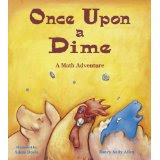
Editors say they are looking for an original story. Most stories are built on universal themes (friendship, loss, anger, etc.) and plot structures with a typical beginning, middle, and ending. Characters face challenges and overcome obstacles. So what’s new! Manuscripts can and should be creative, but probably will never be totally original. The idea is to make your work stand out from thousands of other books on the subject. One way to foster originality is to rely on your own individuality. Think back to your childhood. Remember your thoughts and feelings and how your imagination soared. Every person has a perspective molded by the world in which they live.
Some stories lend an air of originality and some seem little more than a stale retelling. To make a story feel fresh with an element of originality, write your first instinct for action or dialog in a scene; then question everything about what you have written. What if the character did the opposite of what you wrote? Would the scene still make sense and would it bring some originality to the scene? Surprise the reader. The unexpected builds reader interest in the scene and creates your own individual style. Therein lies the core of originality.Some things never change: We want the good guys and gals to win and the bad ones to lose. We are happy with a satisfying ending. But in getting to the ending, we need to push our imaginations out of the comfort zones to create opportunities to lead the reader on a new and surprising journey.
Call for Submissions for Young Writers:
Cuckoo Review. Please ensure that you submit your writing in the correct form. It saves us a lot of hassle and means we’ll be able to get your work on the site quicker.
WORD COUNT
The word limit for all pieces is 500 words. If you’re writing a feature article then the word limit will be set when the piece is assigned.All submissions should be emailed to contactcuckooreview@gmail.com as an attachment (.doc). Please ensure that all reviews include YOUR NAME and:BOOK REVIEW
*Title of book
*Author
*Publisher
*Date of publication (if not already published)
*Link to author websiteSubmissions guidelines at http://review.cuckoowriters.com/what-...
Call for Submissions for Adult Writers:
The Best Advice I Ever Heard. Chicken Soup for the Soul. Have you ever watched a movie or read an article that really had an impact on you that you haven’t been able to forget? Do you have a friend or family member who gave you some advice that you didn’t necessarily want to hear but really needed to hear that stuck with you and directed you to make positive changes in your life?
We are looking for stories that contain a great piece of advice that you were given or advice that you gave to someone else. Whether the advice is about a little thing that improve your everyday life, or major epiphanies that can change a life completely, we want to hear about them and how they made a difference.
Deadline: February 28, 2018
Submissions guidelines at http://original.chickensoup.com/form....
Thank you!Nancy Kelly Allen has written 40+ children’s books and a cookbook, SPIRIT OF KENTUCKY: BOURBON COOKBOOK. To comment or check out my blog: www.nancykellyallen.com
Published on February 04, 2018 06:45
January 21, 2018
Manuscript Wishes
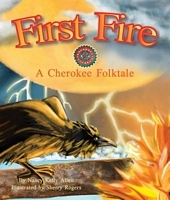
At the beginning of each year, I enjoy trolling through sites and picking up on the latest manuscript wishes as presented by publishers, editors, and agents. The literary offerings are constantly in flow—changing, morphing. New publishers emerge, new styles take charge, and new opportunities for writers abound.
Here are some of the predicted trends and editor wishes for 2018
1. Strong female characters 2. Kid-friendly nonfiction 3. Series
4. Fantasy worlds and creatures
5. Activity books in STEM areas
6. Board books
7. Picture books for ages 4-8—fiction, humorous, wacky stories. Narrative nonfiction. Strong females who made a mark in history.
8. Historical fiction for middle grades. Action and adventure stories with elements of fantasy and magic (series and standalone) as well as nonfiction.
9. Young adult fiction and nonfiction. YA thrillers becoming popular.
10. Graphic novels
11. Unusual voices
12. Unfamiliar style and unique perspectives
13. Diverse books by Own Voice writers14. Subjects on contemporary social matters
Of course, many books that don’t fit within this list will find homes with publishers. Make your manuscript the best it can be, ship it out to prospective editors, and begin a new manuscript while waiting for a response.
Here’s to a bountiful year of writing.
Call for Submissions for Young Writers:
Hanging Loose magazine. Since 1968, every issue of Hanging Loose has had a section of high school writing. We’re always looking for new writers. Poems or short stories, or an equivalent combination of poetry and prose.Submission guidelines at http://hangingloosepress.com/submissions.html
Call for Submissions for Adult Writers: APPLESEEDS: Ages 6 and up, focus on 3rd and 4th grade. Multidisciplinary, nonfiction social studies. Theme-oriented. See guidelines for upcoming themes. Articles should be scientific and/or historical research-oriented. Feature articles, nonfiction, interviews, etc: 1-4 pages. Articles must be proposed first. Submission guidelines at http://www.cricketmag.com/18-Submission-Guidelines-for-APPLESEEDS-magazine-for-children-ages-6-9
Nancy Kelly Allen has written 40+ children’s books and a cookbook, SPIRIT OF KENTUCKY: BOURBON COOKBOOK. To leave comments or to check out her blog click, go to www.nancykellyallen.com
Published on January 21, 2018 06:57
January 7, 2018
Working Together
In a literacy meeting, I heard an African proverb that resonated with me: If you want to go fast, go alone. If you want to go far, go together.
I’m dedicating my first blog post of 2018 to my critique partner, Sandi Underwood, who has enriched my writing over the years. With her keen eye, writing experience, and willingness to help, my writing journey has taken me farther, much farther, than if I trekked alone.
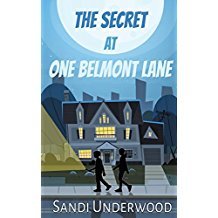 She is invaluable to me because she questions my work. If all the feedback I receive is positive, I won’t grow as a writer and won’t learn to create stronger stories. Editors will certainly find holes, actually wide gaps, if my eyes are the only look-see my words get prior to submitting to a publisher. My critique partner not only points out what does not work but what works well. I need to know both. Her feedback offers an objective review of my draft, an evaluation of its suitability for the age group, and most importantly, it allows me to “see” my work from another perspective, and a qualified perspective, at that.
She is invaluable to me because she questions my work. If all the feedback I receive is positive, I won’t grow as a writer and won’t learn to create stronger stories. Editors will certainly find holes, actually wide gaps, if my eyes are the only look-see my words get prior to submitting to a publisher. My critique partner not only points out what does not work but what works well. I need to know both. Her feedback offers an objective review of my draft, an evaluation of its suitability for the age group, and most importantly, it allows me to “see” my work from another perspective, and a qualified perspective, at that.
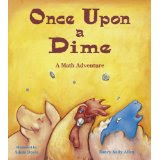 I almost never follow-up with an explanation of why I wrote something the way I did. If she didn’t understand it or the writing was cumbersome on her first read, it will be the same for an editor or a reader. She has my trust, so if she isn’t grasping the flow and rhythm, neither will the gatekeepers.
I almost never follow-up with an explanation of why I wrote something the way I did. If she didn’t understand it or the writing was cumbersome on her first read, it will be the same for an editor or a reader. She has my trust, so if she isn’t grasping the flow and rhythm, neither will the gatekeepers.
In turn, I evaluate her work, which is as valuable to me as receiving a critique. I’m forced out of my comfort zone by engaging in her story and analyzing the many components.
Regardless of where you are on your writing journey, a knowledgeable critique partner can take you far. Attend writing workshops and conferences to find people who understand the genre in which you write and are interested in working together toward a common goal.
Sandi, thanks for traveling this literary journey with me!
Call for Submissions for Young Writers:
Sprout. Our vision is to have a space where young minds can share their thoughts and opinions about society through creative expression. Sprout is a nonprofit, online literary journal for teens, by teens—we look to publish creative media that demonstrates awareness of the world and social commentary, sharing art in its purest, rawest form.
Submission guidelines at http://www.sproutmagazine.org/submiss...
Call for Submissions for Adult Writers:
Upworthy reaches a massive audience with meaningful stories every day, and we're looking for original stories that support our mission of creating a better world. That's where you come in. We're currently accepting pitches from freelancers for stories that are:Surprising
Is the topic, narrative, character, or outcome something truly new? Meaningful
If a million people saw this story, would it make the world a better place? Visual
Are there enough visual elements to engage readers who might be skimming on a phone? Shareable
Would you share it? Would your friends share it? Most importantly, would your mom's friend share it? Submission guidelines at http://www.upworthy.com/pitch-us
Nancy Kelly Allen has written 40+ children’s books and a cookbook, SPIRIT OF KENTUCKY: BOURBON COOKBOOK. Check out her blog at www.nancykellyallen.com
I’m dedicating my first blog post of 2018 to my critique partner, Sandi Underwood, who has enriched my writing over the years. With her keen eye, writing experience, and willingness to help, my writing journey has taken me farther, much farther, than if I trekked alone.
 She is invaluable to me because she questions my work. If all the feedback I receive is positive, I won’t grow as a writer and won’t learn to create stronger stories. Editors will certainly find holes, actually wide gaps, if my eyes are the only look-see my words get prior to submitting to a publisher. My critique partner not only points out what does not work but what works well. I need to know both. Her feedback offers an objective review of my draft, an evaluation of its suitability for the age group, and most importantly, it allows me to “see” my work from another perspective, and a qualified perspective, at that.
She is invaluable to me because she questions my work. If all the feedback I receive is positive, I won’t grow as a writer and won’t learn to create stronger stories. Editors will certainly find holes, actually wide gaps, if my eyes are the only look-see my words get prior to submitting to a publisher. My critique partner not only points out what does not work but what works well. I need to know both. Her feedback offers an objective review of my draft, an evaluation of its suitability for the age group, and most importantly, it allows me to “see” my work from another perspective, and a qualified perspective, at that.  I almost never follow-up with an explanation of why I wrote something the way I did. If she didn’t understand it or the writing was cumbersome on her first read, it will be the same for an editor or a reader. She has my trust, so if she isn’t grasping the flow and rhythm, neither will the gatekeepers.
I almost never follow-up with an explanation of why I wrote something the way I did. If she didn’t understand it or the writing was cumbersome on her first read, it will be the same for an editor or a reader. She has my trust, so if she isn’t grasping the flow and rhythm, neither will the gatekeepers. In turn, I evaluate her work, which is as valuable to me as receiving a critique. I’m forced out of my comfort zone by engaging in her story and analyzing the many components.
Regardless of where you are on your writing journey, a knowledgeable critique partner can take you far. Attend writing workshops and conferences to find people who understand the genre in which you write and are interested in working together toward a common goal.
Sandi, thanks for traveling this literary journey with me!
Call for Submissions for Young Writers:
Sprout. Our vision is to have a space where young minds can share their thoughts and opinions about society through creative expression. Sprout is a nonprofit, online literary journal for teens, by teens—we look to publish creative media that demonstrates awareness of the world and social commentary, sharing art in its purest, rawest form.
Submission guidelines at http://www.sproutmagazine.org/submiss...
Call for Submissions for Adult Writers:
Upworthy reaches a massive audience with meaningful stories every day, and we're looking for original stories that support our mission of creating a better world. That's where you come in. We're currently accepting pitches from freelancers for stories that are:Surprising
Is the topic, narrative, character, or outcome something truly new? Meaningful
If a million people saw this story, would it make the world a better place? Visual
Are there enough visual elements to engage readers who might be skimming on a phone? Shareable
Would you share it? Would your friends share it? Most importantly, would your mom's friend share it? Submission guidelines at http://www.upworthy.com/pitch-us
Nancy Kelly Allen has written 40+ children’s books and a cookbook, SPIRIT OF KENTUCKY: BOURBON COOKBOOK. Check out her blog at www.nancykellyallen.com
Published on January 07, 2018 06:46
December 18, 2017
How to Get Published, Condensed Version
At almost every book signing, someone tells me s/he is writing a children’s book and asks how to get it published. The question seems simple, but the answer is extremely complicated, much too complicated to answer in a short discussion. I usually refer the writer to Children’s Writer’s and Illustrator’s Market because it is a comprehensive book with how-to information and contains a listing of publishers with submission guidelines. I still use this book as a source, but one of several sources.
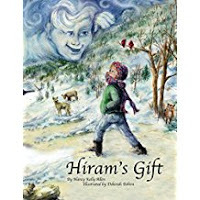 As with many occupations, writing involves a period of practice and growth, so give yourself time to hone those skills and learn the craft. One of the best ways to accomplish this is to read lots of books in the genre in which you write. If you are primarily interested in picture books, go to your local library and choose those that have been written in the past five years. Read a minimum of 100. Yes, you read that number correctly. I’ve read thousands. In the last six weeks, I’ve read over 100, some more than once to analyze the structures or word choices.
As with many occupations, writing involves a period of practice and growth, so give yourself time to hone those skills and learn the craft. One of the best ways to accomplish this is to read lots of books in the genre in which you write. If you are primarily interested in picture books, go to your local library and choose those that have been written in the past five years. Read a minimum of 100. Yes, you read that number correctly. I’ve read thousands. In the last six weeks, I’ve read over 100, some more than once to analyze the structures or word choices.
Attend writing workshops and conferences to learn the basic mechanics of writing.
So now you’ve read, read, read and attended workshops. It’s time to practice. Write. Write. Write. Reading, workshops, and writing serve as the three best ways to an apprenticeship, a learning period.
If you don’t have the means to attend conferences and workshops, check out free online courses. They pop up all the time. Writing newsletters offer excellent guidance. Books on the writing process are probably at your local library or bookstore. Read them. Study them.
Join a local writers’ group, if possible. Every member benefits from the collective knowledge. After all, you’ll keep learning long after your first book is published. An apprenticeship is a lifelong adventure for a writer.
Call for Submissions for Young Writers:
Stone Soup welcomes submissions by children aged 13 and younger. Now we are a digital magazine, we no longer have a limit on the length of a story. However, we find that we tend to gravitate toward shorter stories. While we may publish one 10-page story in an issue of Stone Soup, most of the stories we publish are shorter, between 1,000 and 2,000 words (4 to 8 pages).
There is no minimum length—we have published stories that are less than a page!
Submission guidelines https://stonesoup.com/how-to-submit-writing-and-art-to-stone-soup/
Call for Submissions for Adult Writers:
CICADA is a YA lit/comics magazine fascinated with the lyric and strange and committed to work that speaks to teens’ truths. We publish poetry, realistic and genre fic, essay, and comics by adults and teens. (We are also inordinately fond of Viking jokes .) Our readers are smart and curious; submissions are invited but not required to engage young adult themes. CICADA does not distribute theme lists for upcoming issues.
Submission guidelines: http://cricketmedia.com/cicada-submission-guidelines
Nancy Kelly Allen has written 40+ children’s books and a cookbook, SPIRIT OF KENTUCKY: BOURBON COOKBOOK. Check out her blog at www.nancykellyallen.com
 As with many occupations, writing involves a period of practice and growth, so give yourself time to hone those skills and learn the craft. One of the best ways to accomplish this is to read lots of books in the genre in which you write. If you are primarily interested in picture books, go to your local library and choose those that have been written in the past five years. Read a minimum of 100. Yes, you read that number correctly. I’ve read thousands. In the last six weeks, I’ve read over 100, some more than once to analyze the structures or word choices.
As with many occupations, writing involves a period of practice and growth, so give yourself time to hone those skills and learn the craft. One of the best ways to accomplish this is to read lots of books in the genre in which you write. If you are primarily interested in picture books, go to your local library and choose those that have been written in the past five years. Read a minimum of 100. Yes, you read that number correctly. I’ve read thousands. In the last six weeks, I’ve read over 100, some more than once to analyze the structures or word choices. Attend writing workshops and conferences to learn the basic mechanics of writing.
So now you’ve read, read, read and attended workshops. It’s time to practice. Write. Write. Write. Reading, workshops, and writing serve as the three best ways to an apprenticeship, a learning period.
If you don’t have the means to attend conferences and workshops, check out free online courses. They pop up all the time. Writing newsletters offer excellent guidance. Books on the writing process are probably at your local library or bookstore. Read them. Study them.
Join a local writers’ group, if possible. Every member benefits from the collective knowledge. After all, you’ll keep learning long after your first book is published. An apprenticeship is a lifelong adventure for a writer.
Call for Submissions for Young Writers:
Stone Soup welcomes submissions by children aged 13 and younger. Now we are a digital magazine, we no longer have a limit on the length of a story. However, we find that we tend to gravitate toward shorter stories. While we may publish one 10-page story in an issue of Stone Soup, most of the stories we publish are shorter, between 1,000 and 2,000 words (4 to 8 pages).
There is no minimum length—we have published stories that are less than a page!
Submission guidelines https://stonesoup.com/how-to-submit-writing-and-art-to-stone-soup/
Call for Submissions for Adult Writers:
CICADA is a YA lit/comics magazine fascinated with the lyric and strange and committed to work that speaks to teens’ truths. We publish poetry, realistic and genre fic, essay, and comics by adults and teens. (We are also inordinately fond of Viking jokes .) Our readers are smart and curious; submissions are invited but not required to engage young adult themes. CICADA does not distribute theme lists for upcoming issues.
Submission guidelines: http://cricketmedia.com/cicada-submission-guidelines
Nancy Kelly Allen has written 40+ children’s books and a cookbook, SPIRIT OF KENTUCKY: BOURBON COOKBOOK. Check out her blog at www.nancykellyallen.com
Published on December 18, 2017 06:32
December 3, 2017
“Patience is not the ability to wait but the ability to k...
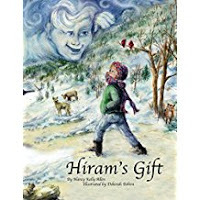 “Patience is not the ability to wait but the ability to keep a good attitude while waiting.” ― Joyce Meyer
“Patience is not the ability to wait but the ability to keep a good attitude while waiting.” ― Joyce MeyerI recently finished, and lived to tell it, a deadline on a children’s book. Deadlines are a wonderful pain to have experienced, or so they say. I don’t remember who “they” are, and I wonder if they were serious. Deadlines rattle my nerves, disturbs my sleep, and I truly don’t appreciate them as I’m struggling to finish. Gotta have ’em but we don’t gotta love ’em. No deadline, no book. That sentiment gets my attention and spurs me into action.
I shipped that “baby” out, but before I did, I started with the same ole, same ole: I should do this (rewrite a particular sentence) or that (remove a particular paragraph). My tummy queased , my toes curled, and my thumb beat a frantic rhythm on the desk. Of course, this response is somewhat ridiculous considering that I’ve been doing this since 1989. Maybe my reaction is a result of receiving so many rejections over the years. I’ve certainly had my share. Maybe it’s my desire to write and write and write, aiming for perfection. But after eight years (off and on) with this manuscript, I need to part with it…or maybe one more week of revisions would…what?
Finally, I just pushed SEND. It is what it is. The publisher will take the rewrite, or not. The best thing I can do is concentrate on the next story since I have zero control over what publishers and editors do. Those stories that come close and then are rejected are the hardest to handle.
Over the years, I’ve received hundreds of “thanks, but no thanks.” Actually the rejections are NOT that harsh, but even the most courteous produce a sting. Sometimes rejections rain down on me, hurricane style, leaving my mental state devastated for a day or two in their wake.
The nice thing is the memory fades and the pain eases as I focus on the next project or on another manuscript that is making its rounds with the literary gatekeepers.
Here’s to new manuscripts, new hopes, new dreams…and deadlines…and waiting.
Call for Submissions for Young Writers:
The PUSH novel contest is open to submissions! All entries must be postmarked by January 16, 2014. Happy writing!
Submissions must contain at least three and no more than five chapters from an original novel (excerpt minimum 15 pages, maximum 50 pages), as well as an outline/summary of the rest of the book, not to exceed two pages in length. All entries should be double-spaced and in 12-point font. The award is given in conjunction with the Scholastic Art & Writing Awards, and all rules and regulations can be found on www.artandwriting.org. This contest is only open to students in grades 7 through 12. The gold medal winner will win a Scholastic Art & Writing Award, and the manuscript will be worked on with PUSH editorial staff, with the hope of eventual publication.
Guidelines at http://www.artandwriting.org/what-we-do/the-awards/guidelines-deadlines/
Call for Submissions for Adult Writers:
Humpty Dumpty (ages 2-6)FICTION: Short stories 450 words or less. Payment: $30 and up.BUILD-A-BOOK: We are accepting short mini-stories of 70-125 words. These should be positive and light-hearted; often humorous. Characters can be children or animals. We welcome material that deals with kindness, love, good manners, friendship, holidays, and seasons.POETRY: We accept poems 4-12 line poems. Please remember the age of your audience. CRAFTS: We accept fun crafts of 250 words or less that young children can make with a bit of adult help. Crafts can celebrate holidays or seasons. Materials should be inexpensive and easy to obtain. Include easy-to-understand steps and directions and, if possible, include a photo of the finished craft.Submission guidelines at http://www.uskidsmags.com/writers-guidelines/
Nancy Kelly Allen has written 40+ children’s books and a cookbook, SPIRIT OF KENTUCKY: BOURBON COOKBOOK. Check out her blog at www.nancykellyallen.com
Published on December 03, 2017 07:06
November 19, 2017
Author Sandi Underwood
Today, I welcome Sandi Underwood, author extraordinaire, to my blog. What makes her extraordinaire?you might ask. Simple answer: She persevered. She didn’t give up her dream of writing a book after receiving a trunkful of rejection letters. She didn’t give up after years of editors saying, “No, thanks!”
As with many authors, dreams entangle with rejection, and hope seems out of reach, impossible, actually. But when a contract is offered and the impossible becomes possible, it happens suddenly. It’s Sandi’s journey, and mine, too.
I’ve worked with Sandi as my critique partner for the last 10 years. She’s helped take many of my manuscripts from impossible to possible. Now she has two books in the production line with traditional publishers. I’m so excited for her. She’s living proof that hard work pays off.
NKA: Welcome, Sandi. Tell us about your new book.
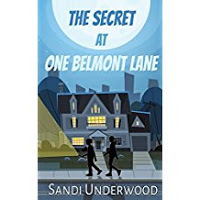 SU: Thank you for this invitation. I began THE SECRET AT ONE BELMONT LANE back when my grandson was gearing up to enter sixth grade. I researched what that age group enjoyed and learned that books on shapeshifters were popular. Easy task, right? Not so for this grandmother. That’s probably why the story laid around and collected dust for several years—that grandson is a sophomore in high school now! In my story, the main characters are a pre-teen girl (Erin) and her nerdy neighbor (Elwood). I wanted to write a story that both boys and girls would enjoy. I threw in a sprinkle of Mom and Dad and added a spoonful of bizarre and a dash of unexplainable. The end result is suspenseful and creepy, at times.
SU: Thank you for this invitation. I began THE SECRET AT ONE BELMONT LANE back when my grandson was gearing up to enter sixth grade. I researched what that age group enjoyed and learned that books on shapeshifters were popular. Easy task, right? Not so for this grandmother. That’s probably why the story laid around and collected dust for several years—that grandson is a sophomore in high school now! In my story, the main characters are a pre-teen girl (Erin) and her nerdy neighbor (Elwood). I wanted to write a story that both boys and girls would enjoy. I threw in a sprinkle of Mom and Dad and added a spoonful of bizarre and a dash of unexplainable. The end result is suspenseful and creepy, at times.
NKA: I love mysteries and humorous fiction. THE SECRET AT ONE BELMONT LANE gives me both in one delicious read. Yum! This is your first book. How did your journey lead from dreaming about this book to actually getting a contract?
SU: I’ve written most of my life. Growing up, there were books everywhere—being a PK (preacher’s kid), my Dad was most-often found reading. I’ve always loved books, and writing just seemed like a natural path; however, there was a huge jump from writing for my own enjoyment and submitting to publishers. I think the first six years, I submitted around fourteen times and had two small magazine publications to show for it. I didn’t get serious until around 2010 and even then, I was inconsistent. It takes dedication that I definitely didn’t possess in the beginning and a great critique partner. Mine just happens to live in Kentucky and I live in Tennessee, but somehow we make it work. (Shout out to Nancy Kelly Allen for being the best critique partner known to mankind. Nancy and I “met” through an online writing group of four, and we are the last two standing.) I joined her group back in September 2007, and I can honestly say I wouldn’t have this first book without her patient guidance. The give-and-take between critique partners is one of the most important tools a writer can have, and I cannot emphasize enough the value it brings.
NKA: I’m truly given more credit than I deserve, much more, to be truthful, but I echo Sandi in that working with a critique partner offers numerous advantages to writers.
What is the theme of the book, the universal experience young readers will identify with?
SU: As a mom of two boys, (a grandmother of seven and a great-Mimi to one beautiful four-month-old), I’ve read my share of children’s books. My story follows the two next-door neighbors as they stumble onto the big “secret” at One Belmont Lane. I wanted my characters to be believable since very little else in the book is. There are secret codes, suspense, danger and unexplainable events from beginning to end. It was also important that Erin and Elwood were the ones to solve the mystery. Sure, most of the events won’t happen to the young readers; but hopefully, the importance of working together will leave a lasting impression. I wrote about everyday activities and people in ordinary life…things we encounter every day…but with a twist.
NKA: Books make great Christmas presents, so where can people buy a copy?
SU: The publication date for The Secret At One Belmont Lane is Tuesday, November 28, 2017. To pre-order click on this link: https://squareup.com/store/prospective-press/item/the-secret-at-one-belmont-lane.
To learn more about me and my writing path, visit my website at www.sandiunderwood.net.
NKA: Congratulations, Sandi. I’m sure young readers will enjoy your book as much as I did. Thanks for sharing your insight on the publishing journey.
Call for Submissions for Young Writers:
Brilliant Star is a bi-monthly, print magazine for ages 8-12 published by the Baha'i faith. According to their website, "Brilliant Star invites children of all faiths to explore concepts that encourage their development as world citizens, such as appreciation for cultural and racial diversity, peace among all religions and nations, the equality of women and men, and the elimination of prejudices." Through fiction, non-fiction, activities, games, puzzles, comics, interviews, music, and expressive art, the magazine seeks to promote values of kindness, courage, creativity, and helpfulness.
Deadline: January 15, 2018
Submission guidelines: https://www.brilliantstarmagazine.org/uploads/about/FAQs/Submission_Guidelines_2013.pdf
Call for Submissions for Adult Writers:
Spider (for ages 6-9) is looking for fiction, nonfiction, poetry, activities, crafts, and recipes on the theme It’s Raining Cats and Dogs. We want wacky and weird stories about kids and their pets—cats, dogs, parrots, horses, lizards, hamsters, gerbils, bunnies, chickens, fish, guinea pigs, snakes. Tell us about a special relationship with one prized pet or about a whole menagerie. Send us stories about heroism, friendship, loyalty, and odd talents. Take us to a pet or horse show, to the farm, to a city dog park, or in a suburban backyard. Submission guidelines: cricketmag.submittable.com/submit/17817/spider-magazine-for-ages-6-9
Nancy Kelly Allen has written 40+ children’s books and a cookbook, SPIRIT OF KENTUCKY: BOURBON COOKBOOK. Check out her blog at www.nancykellyallen.com
As with many authors, dreams entangle with rejection, and hope seems out of reach, impossible, actually. But when a contract is offered and the impossible becomes possible, it happens suddenly. It’s Sandi’s journey, and mine, too.
I’ve worked with Sandi as my critique partner for the last 10 years. She’s helped take many of my manuscripts from impossible to possible. Now she has two books in the production line with traditional publishers. I’m so excited for her. She’s living proof that hard work pays off.
NKA: Welcome, Sandi. Tell us about your new book.
 SU: Thank you for this invitation. I began THE SECRET AT ONE BELMONT LANE back when my grandson was gearing up to enter sixth grade. I researched what that age group enjoyed and learned that books on shapeshifters were popular. Easy task, right? Not so for this grandmother. That’s probably why the story laid around and collected dust for several years—that grandson is a sophomore in high school now! In my story, the main characters are a pre-teen girl (Erin) and her nerdy neighbor (Elwood). I wanted to write a story that both boys and girls would enjoy. I threw in a sprinkle of Mom and Dad and added a spoonful of bizarre and a dash of unexplainable. The end result is suspenseful and creepy, at times.
SU: Thank you for this invitation. I began THE SECRET AT ONE BELMONT LANE back when my grandson was gearing up to enter sixth grade. I researched what that age group enjoyed and learned that books on shapeshifters were popular. Easy task, right? Not so for this grandmother. That’s probably why the story laid around and collected dust for several years—that grandson is a sophomore in high school now! In my story, the main characters are a pre-teen girl (Erin) and her nerdy neighbor (Elwood). I wanted to write a story that both boys and girls would enjoy. I threw in a sprinkle of Mom and Dad and added a spoonful of bizarre and a dash of unexplainable. The end result is suspenseful and creepy, at times.NKA: I love mysteries and humorous fiction. THE SECRET AT ONE BELMONT LANE gives me both in one delicious read. Yum! This is your first book. How did your journey lead from dreaming about this book to actually getting a contract?
SU: I’ve written most of my life. Growing up, there were books everywhere—being a PK (preacher’s kid), my Dad was most-often found reading. I’ve always loved books, and writing just seemed like a natural path; however, there was a huge jump from writing for my own enjoyment and submitting to publishers. I think the first six years, I submitted around fourteen times and had two small magazine publications to show for it. I didn’t get serious until around 2010 and even then, I was inconsistent. It takes dedication that I definitely didn’t possess in the beginning and a great critique partner. Mine just happens to live in Kentucky and I live in Tennessee, but somehow we make it work. (Shout out to Nancy Kelly Allen for being the best critique partner known to mankind. Nancy and I “met” through an online writing group of four, and we are the last two standing.) I joined her group back in September 2007, and I can honestly say I wouldn’t have this first book without her patient guidance. The give-and-take between critique partners is one of the most important tools a writer can have, and I cannot emphasize enough the value it brings.
NKA: I’m truly given more credit than I deserve, much more, to be truthful, but I echo Sandi in that working with a critique partner offers numerous advantages to writers.
What is the theme of the book, the universal experience young readers will identify with?
SU: As a mom of two boys, (a grandmother of seven and a great-Mimi to one beautiful four-month-old), I’ve read my share of children’s books. My story follows the two next-door neighbors as they stumble onto the big “secret” at One Belmont Lane. I wanted my characters to be believable since very little else in the book is. There are secret codes, suspense, danger and unexplainable events from beginning to end. It was also important that Erin and Elwood were the ones to solve the mystery. Sure, most of the events won’t happen to the young readers; but hopefully, the importance of working together will leave a lasting impression. I wrote about everyday activities and people in ordinary life…things we encounter every day…but with a twist.
NKA: Books make great Christmas presents, so where can people buy a copy?
SU: The publication date for The Secret At One Belmont Lane is Tuesday, November 28, 2017. To pre-order click on this link: https://squareup.com/store/prospective-press/item/the-secret-at-one-belmont-lane.
To learn more about me and my writing path, visit my website at www.sandiunderwood.net.
NKA: Congratulations, Sandi. I’m sure young readers will enjoy your book as much as I did. Thanks for sharing your insight on the publishing journey.
Call for Submissions for Young Writers:
Brilliant Star is a bi-monthly, print magazine for ages 8-12 published by the Baha'i faith. According to their website, "Brilliant Star invites children of all faiths to explore concepts that encourage their development as world citizens, such as appreciation for cultural and racial diversity, peace among all religions and nations, the equality of women and men, and the elimination of prejudices." Through fiction, non-fiction, activities, games, puzzles, comics, interviews, music, and expressive art, the magazine seeks to promote values of kindness, courage, creativity, and helpfulness.
Deadline: January 15, 2018
Submission guidelines: https://www.brilliantstarmagazine.org/uploads/about/FAQs/Submission_Guidelines_2013.pdf
Call for Submissions for Adult Writers:
Spider (for ages 6-9) is looking for fiction, nonfiction, poetry, activities, crafts, and recipes on the theme It’s Raining Cats and Dogs. We want wacky and weird stories about kids and their pets—cats, dogs, parrots, horses, lizards, hamsters, gerbils, bunnies, chickens, fish, guinea pigs, snakes. Tell us about a special relationship with one prized pet or about a whole menagerie. Send us stories about heroism, friendship, loyalty, and odd talents. Take us to a pet or horse show, to the farm, to a city dog park, or in a suburban backyard. Submission guidelines: cricketmag.submittable.com/submit/17817/spider-magazine-for-ages-6-9
Nancy Kelly Allen has written 40+ children’s books and a cookbook, SPIRIT OF KENTUCKY: BOURBON COOKBOOK. Check out her blog at www.nancykellyallen.com
Published on November 19, 2017 08:43
November 5, 2017
Writing Children’s Books with Child Appeal, Part 3
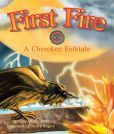
A character can be a spider, monster, dragon, witch, cloud, rock, or whatever your imagination creates. Think about how the character might act in situations you construct: bossy, loud, shy, intimidated, etc. Whatever the main character is, it should exhibit characteristics of a child.
A low word count is necessary for books for the youngest audience. Their attention span is short so the text should reflect this. Picture books are usually less than 1,000 words, but the latest target seems to be under 500 words with many publishers. If writers go beyond that, the likelihood of a rejection is greater.
Is the story delightful? Does it make the reader laugh or contain repetitive phrases the reader enjoys listening to or repeating as the story is read aloud? Are the characters and their antics enjoyable, entertaining, or engaging? Keep the humor and the language of the text age appropriate.
Picture book plots are simple and fast-paced. Keep them sequential, and based on the character’s actions. A wild, wacky story should have some logic in the cause-and-effect unfolding of events. The plot works best when the main character is highly motivated and likable. A strong character drives the story forward and holds the interest of the reader.
Transport the reader into another world with a book that has child appeal.
Call for Submissions for Young Writers:
New Moon Girls. Ideas, Articles, Inventions, Fiction, Gardens, Poetry, Music, Opinions, Apps, Global Villages, Recipes,
Plays, Buildings, Puzzles, Projects, Jokes, Speeches, Games, Screenplays, Sports, Emotions, Equations, Painting, Art, Experiments, Costumes, Activism, Photos, Rockets, Crafts, Designs,Gadgets, Dances, Solutions, Hats and Everything Else You Imagine and Make.Submission guidelines: http://newmoon.com/how-to-get-published/Call for Submissions for Adult Writers: Narrative Magazine. Our fall contest is open to all fiction and nonfiction writers. We’re looking for short shorts, short stories, essays, memoirs, photo essays, graphic stories, all forms of literary nonfiction, and excerpts from longer works of both fiction and nonfiction. Entries must be previously unpublished, no longer than 15,000 words, and must not have been previously chosen as a winner, finalist, or honorable mention in another contest. Submission guidelines: http://www.narrativemagazine.com/fall-2017-story-contest
Nancy Kelly Allen has written 40+ children’s books and a cookbook, SPIRIT OF KENTUCKY: BOURBON COOKBOOK. Check out her blog at www.nancykellyallen.com
Published on November 05, 2017 05:27
October 22, 2017
Writing Children’s Books with Child Appeal, Part 2
Fictional picture books often deal with the character solving a problem, and in doing so, the writer’s job is to show the character’s emotional state. A character’s feelings are the gateway into the story. Emotions make readers feel, make them hunger for the character to overcome the obstacles, and cheer for the victory. Without the emotional stakes, readers are not drawn into the character’s world, so they don’t care. Make readers feel. Make them care. With each scene, consider how the reader will react. Is the event something in which the child can identify? If children see themselves in a story, they identify with it and request it for storytime, over and over.
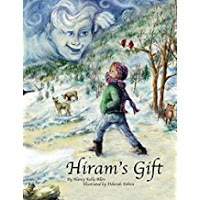 Mountains of children’s books have been written on every subject that interest children of every age. Making a book different in some way so it can compete in a highly competitive market is necessary. One way to do this is to write about some thing or experience in which a child is familiar and flip it to present the information or story in a fresh and engaging way. A retelling of a fairy tale from the voice of a minor character: Example: Cinderella as told by the pumpkin or the glass slipper.
Mountains of children’s books have been written on every subject that interest children of every age. Making a book different in some way so it can compete in a highly competitive market is necessary. One way to do this is to write about some thing or experience in which a child is familiar and flip it to present the information or story in a fresh and engaging way. A retelling of a fairy tale from the voice of a minor character: Example: Cinderella as told by the pumpkin or the glass slipper.
Page turns are fun for the readers and add a ton of child appeal. This approach keeps adding surprises as the story unfolds. Here are three ways to add page turns.
1. Stop in the middle of a sentence and complete it on the following page. Readers enjoy this because it allows them to predict what my happen next. The more a reader is engaged in a story, the more appeal it has.
2. Use part of a compound word on one page and the remainder on the next. Example: He found a rattle…snake in the grass.
3. Transitions words are fun to heighten the interest of turning a page: then, when, but, etc.
In my next blog, I’ll continue with more ideas for writing books with child appeal.
Nancy Kelly Allen has written 40+ children’s books and a cookbook, SPIRIT OF KENTUCKY: BOURBON COOKBOOK. Check out her blog at www.nancykellyallen.com
Call for Submissions for Young Writers:KidSpirit accepts submissions of poetry, artwork, and nonfiction articles from 11- to 17-year-olds everywhere. Except for artwork, all work should be related to the following themes:Unity and Division (Fall 2017)
Creation and Destruction (Winter 2017/18)Submission guidelines at https://kidspiritonline.com/get-involved/
Call for Submissions for Adult Writers:
One Teen Story is a literary magazine for teens and adults who read young adult fiction. They publish 12 issues a year digitally and in print. Each issue contains only one story.
They pay their authors $500 dollars and 25 contributor copies for first North American serial rights. The rights revert back to the author after publication.
Submission guidelines at http://www.authorspublish.com/one-tee...Nancy Kelly Allen has written 40+ children’s books and a cookbook, SPIRIT OF KENTUCKY: BOURBON COOKBOOK. Check out her blog at www.nancykellyallen.com
 Mountains of children’s books have been written on every subject that interest children of every age. Making a book different in some way so it can compete in a highly competitive market is necessary. One way to do this is to write about some thing or experience in which a child is familiar and flip it to present the information or story in a fresh and engaging way. A retelling of a fairy tale from the voice of a minor character: Example: Cinderella as told by the pumpkin or the glass slipper.
Mountains of children’s books have been written on every subject that interest children of every age. Making a book different in some way so it can compete in a highly competitive market is necessary. One way to do this is to write about some thing or experience in which a child is familiar and flip it to present the information or story in a fresh and engaging way. A retelling of a fairy tale from the voice of a minor character: Example: Cinderella as told by the pumpkin or the glass slipper. Page turns are fun for the readers and add a ton of child appeal. This approach keeps adding surprises as the story unfolds. Here are three ways to add page turns.
1. Stop in the middle of a sentence and complete it on the following page. Readers enjoy this because it allows them to predict what my happen next. The more a reader is engaged in a story, the more appeal it has.
2. Use part of a compound word on one page and the remainder on the next. Example: He found a rattle…snake in the grass.
3. Transitions words are fun to heighten the interest of turning a page: then, when, but, etc.
In my next blog, I’ll continue with more ideas for writing books with child appeal.
Nancy Kelly Allen has written 40+ children’s books and a cookbook, SPIRIT OF KENTUCKY: BOURBON COOKBOOK. Check out her blog at www.nancykellyallen.com
Call for Submissions for Young Writers:KidSpirit accepts submissions of poetry, artwork, and nonfiction articles from 11- to 17-year-olds everywhere. Except for artwork, all work should be related to the following themes:Unity and Division (Fall 2017)
Creation and Destruction (Winter 2017/18)Submission guidelines at https://kidspiritonline.com/get-involved/
Call for Submissions for Adult Writers:
One Teen Story is a literary magazine for teens and adults who read young adult fiction. They publish 12 issues a year digitally and in print. Each issue contains only one story.
They pay their authors $500 dollars and 25 contributor copies for first North American serial rights. The rights revert back to the author after publication.
Submission guidelines at http://www.authorspublish.com/one-tee...Nancy Kelly Allen has written 40+ children’s books and a cookbook, SPIRIT OF KENTUCKY: BOURBON COOKBOOK. Check out her blog at www.nancykellyallen.com
Published on October 22, 2017 07:12
October 8, 2017
Writing Children's Books with Child Appeal
One popular request by editors is the need for books with child appeal. So what can we do to add child appeal to a manuscript?
Remember, the first person to whom the book must appeal is an adult—the editor. If an editor doesn’t like a manuscript, it doesn’t become a book with a traditional publisher. A parent, teacher, librarian, gift shop manager etc. must also find it interesting and worthy.
Universal emotions, such as anger, taps into feelings everyone understands and deals with.
Consider the age of the audience. What are the interests of a two-year-old? This age group knows about family, pets, food… When choosing a topic, think about the child’s world and experiences they embrace. A simple walk down a lane is a learning experience for a toddler. They enjoy watching bugs, picking a flower, and blowing a dandelion. Colors and the many hue variations found in nature fascinate them. Shapes and sounds are part of their world. Stay within the child’s experiences and interest.
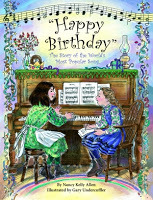 Always reflect events that are age appropriate for the intended audience. The theme, subject matter, and events in the story should interest and be appropriate for the reader’s age group. Engaging a particular group of readers directly is the goal. A book that fits “all age groups” is usually too broad in scope for the picture book crowd. Narrowly focus the theme, with one theme carrying the book.
Always reflect events that are age appropriate for the intended audience. The theme, subject matter, and events in the story should interest and be appropriate for the reader’s age group. Engaging a particular group of readers directly is the goal. A book that fits “all age groups” is usually too broad in scope for the picture book crowd. Narrowly focus the theme, with one theme carrying the book.
In my next blog, I’ll continue with more ideas for writing books with child appeal.
Call for Submissions for Young Writers:
Magic Dragon , a quarterly publication, presents writing and art created by children in the elementary school grades in a magazine of quality four-color printing and graphic display. We believe that our objectives are special – to encourage the development of creativity in children and to provide a medium to share their creative efforts.
Submission guidelines at http://www.magicdragonmagazine.com/
Call for Submissions for Adult Writers:
GLASS & GARDENS: SOLARPUNK SUMMERS
Solarpunk is a type of eco-conscious science fiction that imagines an optimistic future founded on renewable energies. It might take place in a wind-powered skyscraper or on a solar-powered robotic farm, in a bustling green-roofed metropolis or in a small but tech-saavy desert village. Often coupled with an art nouveau aesthetic, and always inclusive and diverse, solarpunk stories show the ways we have adapted to climate change, or the ways we have overcome it.
Submission guidelines at http://www.worldweaverpress.com/submi...
Nancy Kelly Allen has written 40+ children’s books and a cookbook, SPIRIT OF KENTUCKY: BOURBON COOKBOOK. Check out her blog at www.nancykellyallen.com
Remember, the first person to whom the book must appeal is an adult—the editor. If an editor doesn’t like a manuscript, it doesn’t become a book with a traditional publisher. A parent, teacher, librarian, gift shop manager etc. must also find it interesting and worthy.
Universal emotions, such as anger, taps into feelings everyone understands and deals with.
Consider the age of the audience. What are the interests of a two-year-old? This age group knows about family, pets, food… When choosing a topic, think about the child’s world and experiences they embrace. A simple walk down a lane is a learning experience for a toddler. They enjoy watching bugs, picking a flower, and blowing a dandelion. Colors and the many hue variations found in nature fascinate them. Shapes and sounds are part of their world. Stay within the child’s experiences and interest.
 Always reflect events that are age appropriate for the intended audience. The theme, subject matter, and events in the story should interest and be appropriate for the reader’s age group. Engaging a particular group of readers directly is the goal. A book that fits “all age groups” is usually too broad in scope for the picture book crowd. Narrowly focus the theme, with one theme carrying the book.
Always reflect events that are age appropriate for the intended audience. The theme, subject matter, and events in the story should interest and be appropriate for the reader’s age group. Engaging a particular group of readers directly is the goal. A book that fits “all age groups” is usually too broad in scope for the picture book crowd. Narrowly focus the theme, with one theme carrying the book.In my next blog, I’ll continue with more ideas for writing books with child appeal.
Call for Submissions for Young Writers:
Magic Dragon , a quarterly publication, presents writing and art created by children in the elementary school grades in a magazine of quality four-color printing and graphic display. We believe that our objectives are special – to encourage the development of creativity in children and to provide a medium to share their creative efforts.
Submission guidelines at http://www.magicdragonmagazine.com/
Call for Submissions for Adult Writers:
GLASS & GARDENS: SOLARPUNK SUMMERS
Solarpunk is a type of eco-conscious science fiction that imagines an optimistic future founded on renewable energies. It might take place in a wind-powered skyscraper or on a solar-powered robotic farm, in a bustling green-roofed metropolis or in a small but tech-saavy desert village. Often coupled with an art nouveau aesthetic, and always inclusive and diverse, solarpunk stories show the ways we have adapted to climate change, or the ways we have overcome it.
Submission guidelines at http://www.worldweaverpress.com/submi...
Nancy Kelly Allen has written 40+ children’s books and a cookbook, SPIRIT OF KENTUCKY: BOURBON COOKBOOK. Check out her blog at www.nancykellyallen.com
Published on October 08, 2017 07:39
September 24, 2017
Central Thread in Writing a Picture Book Biography
I received the following feedback on a picture book biography I’m in the process of revising: Find a central thread that ties all the episodes together, such as wanderlust to move on, an inner struggle to see the world beyond the territory in which the character lives, or an ambition to do something new and exciting.
This advice makes so much sense to me. I agreed, totally. Whatever route I choose, I need to tie it in at the beginning and carry in through to the end by unearthing some common threads.
I have a long way to go with this story, but I will continue to read, research, and collect data based on the character’s life. Each bit of information provides another piece of the puzzle. After pondering various ways to tell her story, I’ve decided to focus on her sense of adventure, her desire to travel new trails, and experience new territories.
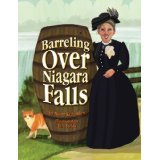 Since most picture books are 32 pages, biographies are limited in telling the wide expanse of a person’s life. Instead, focusing on pivotal scenes within a narrow narrative arc (beginning, middle, ending) seems to work for my particular story.
Since most picture books are 32 pages, biographies are limited in telling the wide expanse of a person’s life. Instead, focusing on pivotal scenes within a narrow narrative arc (beginning, middle, ending) seems to work for my particular story.
Pondering, that’s the key to figuring out how to approach this revision. Pondering different possibilities. Pondering a way to crawl inside the character’s head and figure out how and where to take her, finding the passionate core to create an emotional impact for the reader.
My pondering sometimes happens in the middle of the night. I’ve worked out so many character situations when I wake up in the middle of the night and a solution pops into my head. Some pop right back out, and I can’t remember them the next day. Anyone have a popper stopper?
Call for Submissions for Young Writers:
Launch Pad: Where Young Authors and Illustrators Take Off!publishes stories, art, poetry, nonfiction, and book reviews by kids ages 6 – 14. If we select you as an author, we will send your work to a young artist to illustrate before publishing it on our website. If we select you as an artist, we will send you something from a young author to illustrate! Ask a parent before submitting to our site.
Submission guidelines at http://www.launchpadmag.com/
Call for Submissions for Adult Writers:
Humpty Dumpty and Jack and Jillprovide fun, entertaining reading material is our priority. We accept humorous, playful, and witty stories that kids would love to read—not stories that grownups think kids should read.As part of the Children’s Better Health Institute, we are always in need of high-quality stories, articles, and activities with a broad health and fitness focus. Please keep in mind that we would rather show kids living a healthy lifestyle than dictate a healthy lifestyle to our readers. In other words, health topics should be incorporated into the story or article, not be the focus of it.Submission guidelines athttp://www.uskidsmags.com/writers-guidelines/Nancy Kelly Allen has written 40+ children’s books and a cookbook, SPIRIT OF KENTUCKY: BOURBON COOKBOOK. Check out her blog at www.nancykellyallen.com
This advice makes so much sense to me. I agreed, totally. Whatever route I choose, I need to tie it in at the beginning and carry in through to the end by unearthing some common threads.
I have a long way to go with this story, but I will continue to read, research, and collect data based on the character’s life. Each bit of information provides another piece of the puzzle. After pondering various ways to tell her story, I’ve decided to focus on her sense of adventure, her desire to travel new trails, and experience new territories.
 Since most picture books are 32 pages, biographies are limited in telling the wide expanse of a person’s life. Instead, focusing on pivotal scenes within a narrow narrative arc (beginning, middle, ending) seems to work for my particular story.
Since most picture books are 32 pages, biographies are limited in telling the wide expanse of a person’s life. Instead, focusing on pivotal scenes within a narrow narrative arc (beginning, middle, ending) seems to work for my particular story.Pondering, that’s the key to figuring out how to approach this revision. Pondering different possibilities. Pondering a way to crawl inside the character’s head and figure out how and where to take her, finding the passionate core to create an emotional impact for the reader.
My pondering sometimes happens in the middle of the night. I’ve worked out so many character situations when I wake up in the middle of the night and a solution pops into my head. Some pop right back out, and I can’t remember them the next day. Anyone have a popper stopper?
Call for Submissions for Young Writers:
Launch Pad: Where Young Authors and Illustrators Take Off!publishes stories, art, poetry, nonfiction, and book reviews by kids ages 6 – 14. If we select you as an author, we will send your work to a young artist to illustrate before publishing it on our website. If we select you as an artist, we will send you something from a young author to illustrate! Ask a parent before submitting to our site.
Submission guidelines at http://www.launchpadmag.com/
Call for Submissions for Adult Writers:
Humpty Dumpty and Jack and Jillprovide fun, entertaining reading material is our priority. We accept humorous, playful, and witty stories that kids would love to read—not stories that grownups think kids should read.As part of the Children’s Better Health Institute, we are always in need of high-quality stories, articles, and activities with a broad health and fitness focus. Please keep in mind that we would rather show kids living a healthy lifestyle than dictate a healthy lifestyle to our readers. In other words, health topics should be incorporated into the story or article, not be the focus of it.Submission guidelines athttp://www.uskidsmags.com/writers-guidelines/Nancy Kelly Allen has written 40+ children’s books and a cookbook, SPIRIT OF KENTUCKY: BOURBON COOKBOOK. Check out her blog at www.nancykellyallen.com
Published on September 24, 2017 05:11



